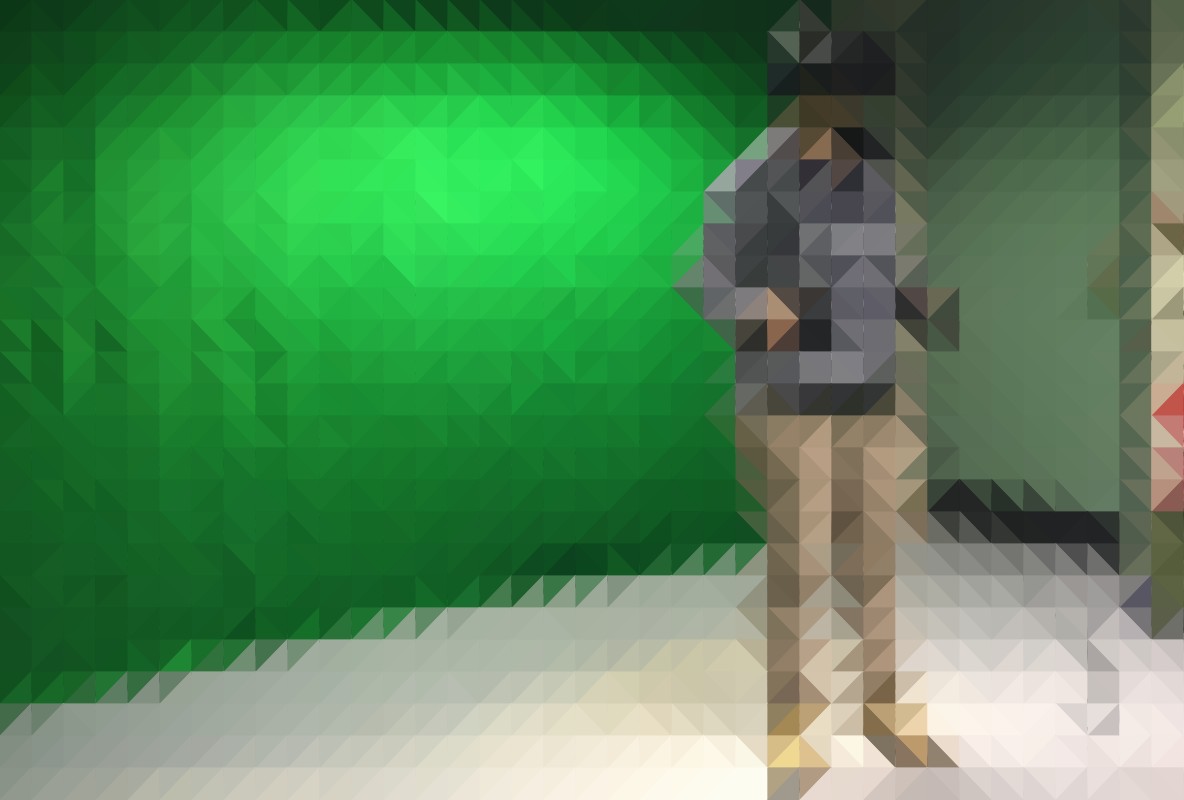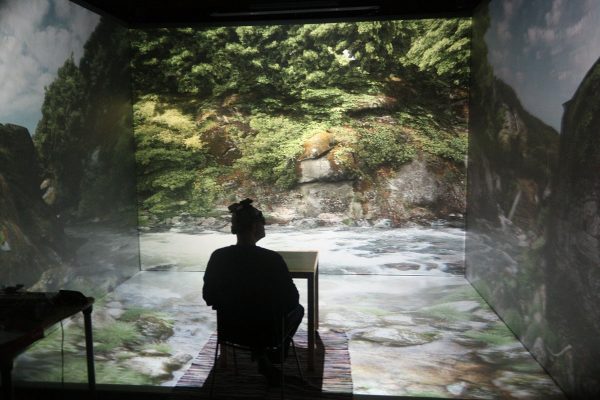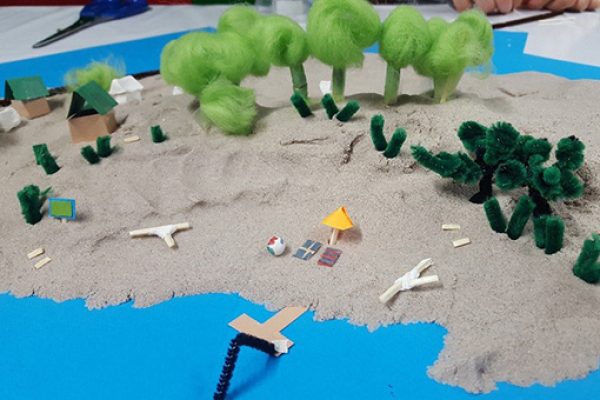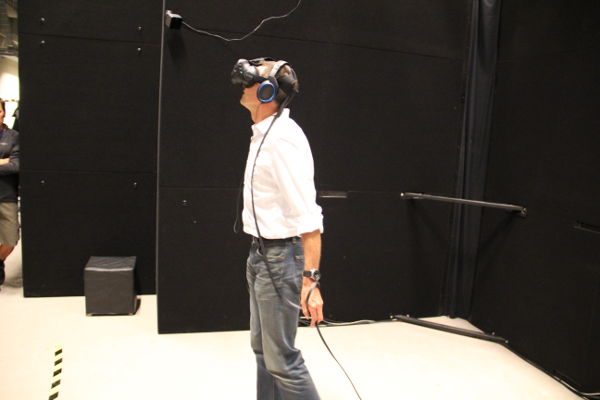Overview
How might virtual experiences of nature improve mood and alleviate boredom?
This 3-year research project tackled this question, focusing on how different digital delivery methods can impact wellbeing.
Immersive underwater environments were presented on a traditional 2D TV screen, via 360 video, and using interactive virtual reality technology.
In the following sections we explain the rationale behind the study and detail the methods we used. Findings are currently being submitted to an academic journal and will be updated here as soon as they are published.
Background
Direct contact with the natural world can support a variety of health and wellbeing outcomes, including boosting positive emotions and mood.
However, accessing ‘real’ natural environments is not always practical, particularly for those in health and care settings.
This has led researchers to explore the potential benefits of a range of simulated nature-based experiences, such as biophilic corridors, indoor plants and aquariums. Yet these surrogates can be limited in their ability to recreate natural environments, possibly diminishing their therapeutic potential.
The recent advent of consumer-ready virtual reality technology allows us to consider a new approach, one where users can become fully immersed in a digital world. Could this new delivery mechanism offer benefits beyond traditional approaches? We developed a novel experimental approach to find out.
We define virtual reality (VR) as the experience produced when an individual wears a head-mounted display, becoming immersed in a panoramic view of an alternate environment.
Although VR nature has been used for short-term distraction from pain, anxiety or distress during surgical procedures, we know of no research which has used this approach to explore mood-related issues such as boredom, a key focus of this work.
We were also interested in how these experiences might impact participants’ connectedness to nature, an important component of both wellbeing and behaviour.
Experimental design
Our lab-based study used three carefully constructed experimental conditions.
Following on from work that suggests underwater environments might be particularly good at improving wellbeing (read more here), we created three increasingly immersive submarine experiences. These recreated an underwater journey on a tropical reef and featured coral, fish and turtles.
The first was viewed via a high definition 2D television, a familiar viewing method in most care settings. The second used 360 video delivered through a VR headset, allowing an immersive panoramic view but no interaction. The third delivery mechanism harnessed truly interactive VR, using WEVR’s the Blu experience.
Each environment was closely standardised in both content and length, each lasting 5 minutes. The TV and 360 environments used footage from the BBC’s Blue Planet 2 series. All experiences were given a consistent narrative and underwater soundscape.
Because we were interested in the effects of these conditions on boredom, our participants watched a boring video before they viewed one of our virtual nature conditions.
We also collected data on participants’ positive and negative mood, nature connectedness and presence (a measure of how immersive they found the experience).

Our three underwater conditions. L-R, 2D TV; 360 VR; interactive VR. Click here to view a full sized version of this image.
Who took part?
We ran this experiment in our VR laboratory at the University of Exeter throughout 2018.
Participants were recruited from the general public in the South West of England, using traditional and social media to advertise the project.
A total of 96 people took part.
Our sample was roughly half female and highly varied in age. Most had never experienced virtual reality before but over half of our participants had spent time in underwater environments.
People were randomly allocated to a virtual nature condition whilst also ensuring a near even split between our delivery types.
Findings
We’re currently submitting our findings to an academic journal, so we can’t share them just yet.
As soon as they have been published we’ll be able to provide more detail, in the meantime we can talk broadly about the implications of this research.
This is one of the first studies to measure the impacts of digital nature on boredom, a common negative emotion experienced in medical and care settings. We hope that our results will go on to inform interventions designed to alleviate boredom in these environments, and we’re having early conversations with clinicians to explore those possibilities.
We also think this is the first study to compare matched nature content from TV documentaries with two different types of virtual reality. Thanks to support from the BBC’s Natural History Unit, we were able to select documentary footage that closely paralleled the experience of an off-the-shelf CG-VR package, matching content across three modes in a manner that is rarely possible.
Moreover, our results could have important implications for nature TV makers.
The experimental design we’ve used could be replicated to investigate the likely impact of programmes before release. Different emotions and moods might be induced in viewers before watching new content, providing an evidence-based approach to programme-making which boosts emotional responses and nature connectedness in audiences.
We will update this page further as soon as our results are available.









